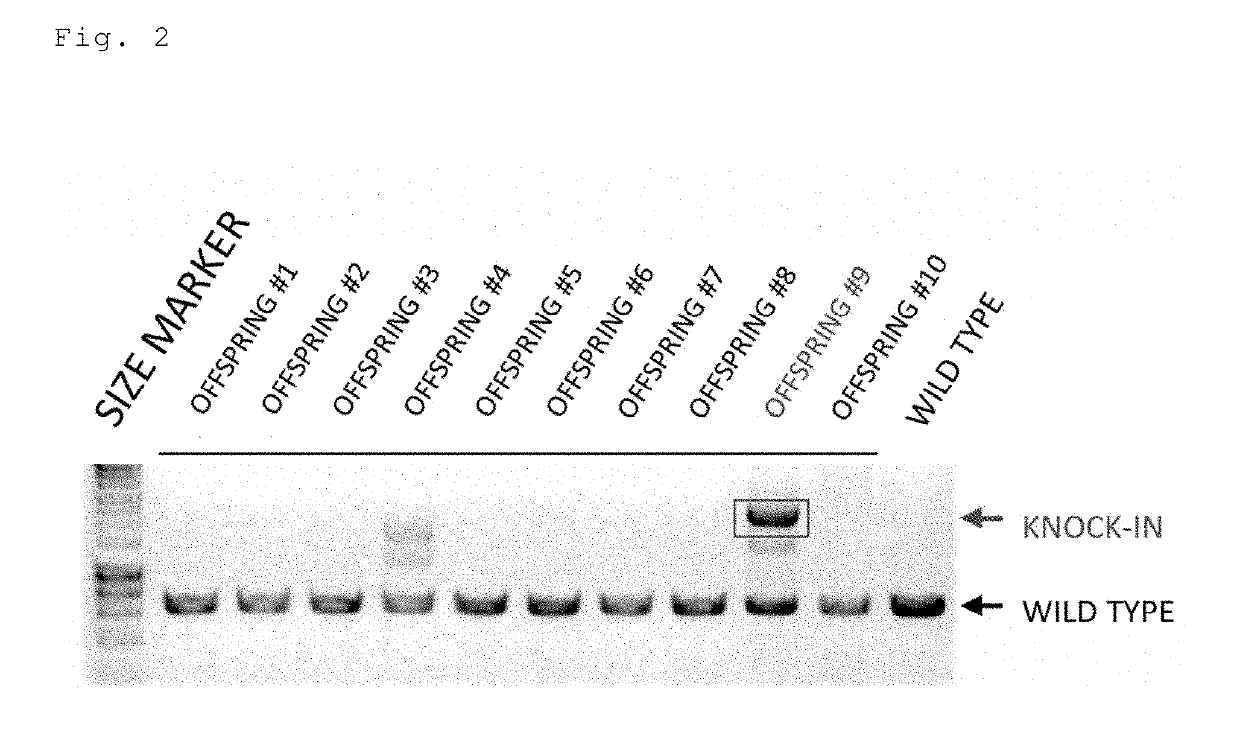Method for preparing gene knock-in cells
a technology of knock-in cells and knock-in cells, which is applied in the field of methods, can solve the problems of low efficiency of gene knock-in cells, complex and labor-intensive steps of using embryonic stem cells, etc., and achieves the effects of short time, high efficiency and good yield
- Summary
- Abstract
- Description
- Claims
- Application Information
AI Technical Summary
Benefits of technology
Problems solved by technology
Method used
Image
Examples
example 1
[Example 1] Cloning Free CRISPR / Cas System+Long-Chain Single-Stranded Donor DNA
[0157]Two crRNAs targeting the 5′ upstream and the 3′ upstream of the second exon of the mouse Col12a1 gene, a tracrRNA, a Cas9 protein, and a floxCol12a1 long-chain single-stranded donor DNA (637 bases) were injected into a fertilized mouse egg. All of the 3 offspring were floxCol12a1 knock-in mice (FIG. 4). One of them was a homo knock-in mouse. Moreover, in the same experiment with an increased number of offspring, 9 of the 12 offspring were floxCol12a1 knock-in mice (FIG. 5; offspring 3 of lane 4 was unanalyzable and thus excluded). The overall knock-in efficiency was 80% (12 / 15).
[0158]Similar experiments were conducted using other genes as targets, and all of these cases confirmed highly efficient knock-in.
[0159]As described above, it was revealed that a combination of a cloning free CRISPR / Cas system with a long-chain single-stranded donor DNA makes it possible to extremely highly efficiently knock ...
PUM
| Property | Measurement | Unit |
|---|---|---|
| concentration | aaaaa | aaaaa |
| concentration | aaaaa | aaaaa |
| concentration | aaaaa | aaaaa |
Abstract
Description
Claims
Application Information
 Login to View More
Login to View More - R&D
- Intellectual Property
- Life Sciences
- Materials
- Tech Scout
- Unparalleled Data Quality
- Higher Quality Content
- 60% Fewer Hallucinations
Browse by: Latest US Patents, China's latest patents, Technical Efficacy Thesaurus, Application Domain, Technology Topic, Popular Technical Reports.
© 2025 PatSnap. All rights reserved.Legal|Privacy policy|Modern Slavery Act Transparency Statement|Sitemap|About US| Contact US: help@patsnap.com



